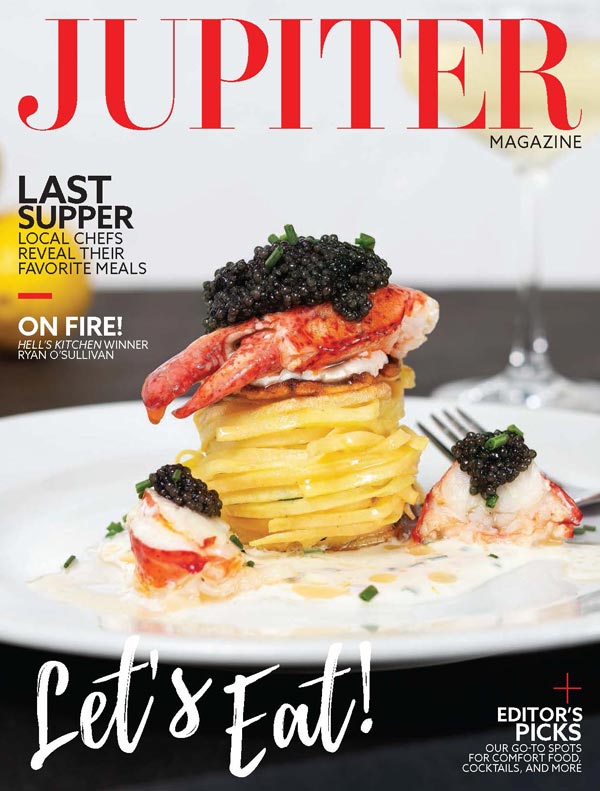
Photos by Ian Jacob
Have you ever stopped to think about where your favorite piece of jewelry came from or what it took to make the wedding band around your finger? According to One Green Planet, it is estimated that in addition to producing carbon emissions, mining for just one gold ring produces about 20 tons of waste—the equivalent to the weight of 29 telephone booths—and also raises questions about ethical jewelry practices.
These reasons and more prompted the group Ethical Metalsmiths (ethicalmetalsmiths.org) to collaborate with makers to inspire responsible jewelry practices through education, connection, and action. Fourteen years ago, its founders—Susie Ganch, associate professor of metals at Virginia Commonwealth University, and sustainable jewelry consultant Christina Miller—came up with an idea for something called Radical Jewelry Makeover (RJM), a local community “mining” project that raises awareness of recycled metals and gemstones.

According to Kathleen Kennedy, metals area coordinator and instructor for the Department of Craft and Material Studies at VCU and co-director of Radical Jewelry Makeover, the project was Ganch and Miller’s way of introducing students in their classrooms to information about material sourcing and recycling. The idea behind RJM is to “ask the community to go into their jewelry boxes to dig out all of their unwanted or broken jewelry and give it to artists and students to remake into something new,” she says.
The project launched in 2007 in Virginia and since has expanded globally, taking place everywhere from San Francisco to Brisbane, Australia. This year, RJM touched down in South Florida at the Lighthouse ArtCenter in Tequesta, culminating in an exhibition currently running at the center’s gallery through March 20. Reimagined works of wearable art by students at Lighthouse ArtCenter and Armory Art Center are on display, in addition to pieces made by artists from Resource Depot, Virginia Commonwealth University,
Jupiter Community High School, and independent jewelry makers across the country.

On small stone below: Flowered twig necklace with crystal faux silver and potato pearls, $75, Liz Dedick. On metal plate: Silver-plated multi-strand bracelet with pearls and rhinestones, $15, Ona Kizis.
On bottom stone, from left: Sterling silver cuff bracelet with 14-karat gold dots, $250, Betsy Drake Bierkan; sterling silver circle ring with silver cast element, $250, Hannah Rose Wilson.
This year’s RJM at Lighthouse all began in November 2019 with a call for donations. As items flooded the Lighthouse ArtCenter, a sorting day was held in January 2020 to organize and deconstruct all the pieces of jewelry. The center then held a Kickoff Symposium, where Kennedy explained the project to participating makers and introduced the RJM team. Guest speakers also discussed topics such as mining and studio practices. “We had demonstrations on how to make certain things, like free demos on how to make rivets, use cold connection, and just make jewelry on a very basic level,” says Lisa Johnson, director of jewelry and textiles at Lighthouse ArtCenter. At the end of the symposium, artists began sifting through the donated materials to select what they wanted to work with, then had four weeks to create new pieces out of these raw materials.
During this period, various workshops were offered at Lighthouse ArtCenter, Armory Art Center, and Resource Depot—on topics ranging from clasps and closures to using resins, plastics, and inlay techniques—to assist the makers with their projects.
More than 100 makers participated in this year’s event, creating over 200 pieces of reimagined jewelry. The pieces in the exhibition are available for purchase, which will raise awareness and generate program funds for RJM and the center. A flipbook is also available on the Lighthouse ArtCenter website, showcasing each design, for those who are unable to view the exhibition in person. Jewelry pieces range in cost from $10 to several hundred dollars, and those who donated old jewelry to recycle and reuse received a coupon based on the value of their donations, which can be used toward purchasing a new item from the exhibition.
“It should be a really fantastic show,” says Johnson, who played an integral role in coordinating the exhibition. “I think a lot of these designs are innovative. It really brought out people’s creativity.” lighthousearts.org; radicaljewelrymakeover.org

In Loving Memory
This year’s Radical Jewelry Makeover exhibition is dedicated to Maria Tritico, who was tragically killed on December 6, 2020 at the age of 32. A beloved Tequesta resident and Lighthouse ArtCenter’s director of education, Tritico made a mark in the community and inspired her peers, students, and loved ones. “She’s the reason that RJM is happening in South Florida right now,” says Kathleen Kennedy. “She was the one who instigated the project and really wanted to do it with Lighthouse. She gathered all of the other organizations—the Armory Art Center and Resource Depot—and got everyone to collaborate.” A Maria Tritico Memorial Fund has been set up to honor her impact on the community. To learn more or to donate, visit lighthousearts.org.











Facebook Comments